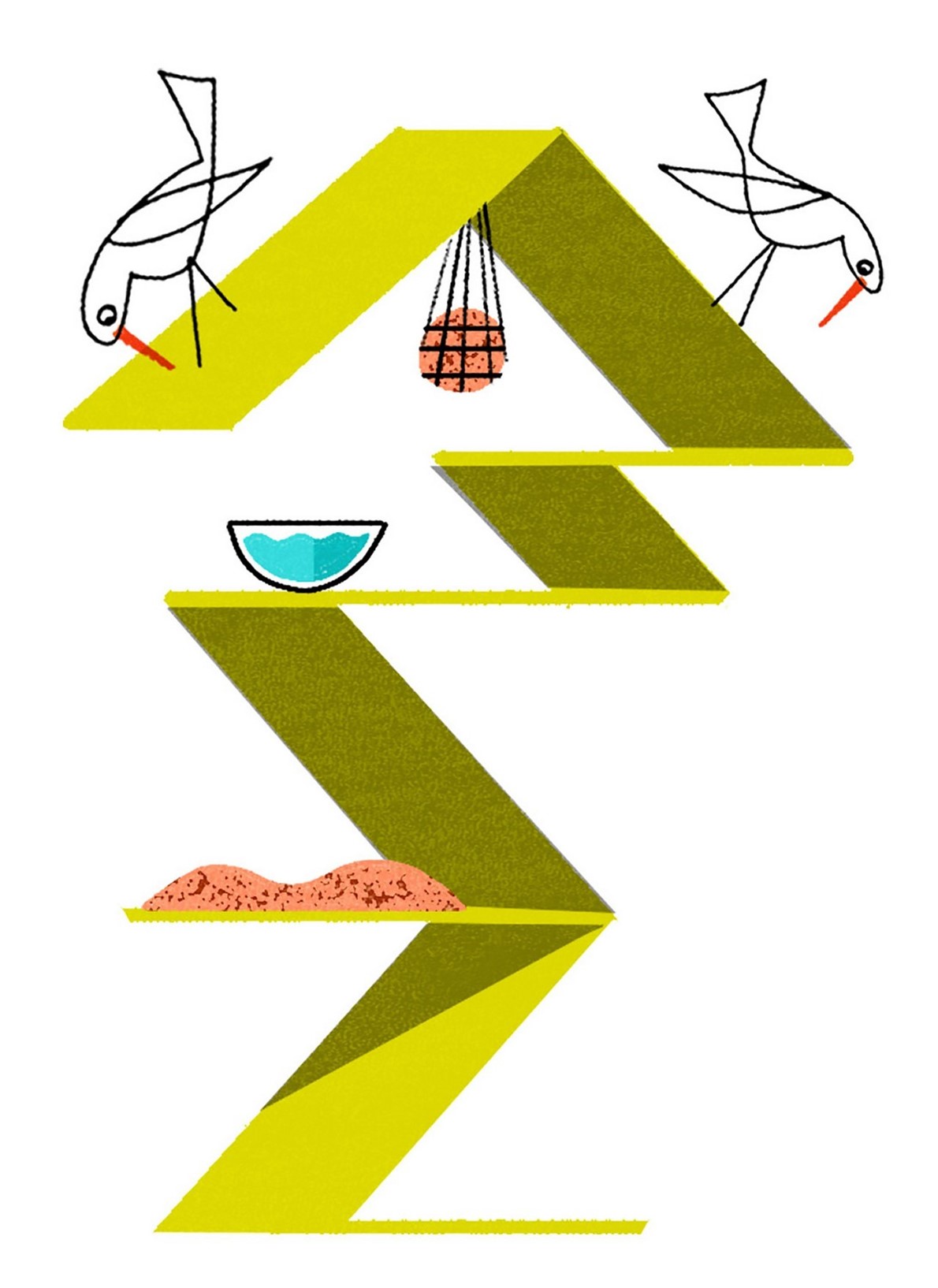The
question is: “I have a large covered
porch and would like to decorate it. Any
suggestions for outdoor fabrics and rugs?”
اضافة اعلان
Well, we have come
a long way from stiff vinyl cushions that cracked and faded in the sun and
perpetually damp rugs that often smelled of mildew. Today’s outdoor textiles
have a softer hand and resist the growth of icky microorganisms. The company
Sunbrella, a leader in this world, introduced its first awning fabric in 1961,
adding marine canvas in the 1970s and outdoor furniture fabric in the 1980s.
All are composed of an acrylic that is dyed before the material is extruded as
thread, making it fade-resistant. Other companies use Sunbrella’s threads to
make their own versions: Knoll offers solids, florals, geometrics, and textured
weaves. For sun-loving stripes with a
Riviera feeling, look to Les Toiles du
Soleil, a French company that also produces table linens and pillows.
Outdoor rugs come
in two varieties: those that can be hosed off and left to dry in the sun and
those that can be thrown into the washing machine.
The machine version
has limits, of course — you cannot stuff a 275cm-by-365cm rug into a typical
family top loader. But if you have access to a large front loader at a nearby
laundromat, these rugs come in fantastic patterns and often feel and look like
indoor rugs. Check out the offerings of Ruggable (especially the Persian and
bohemian categories) and Fab Habitat (made from recycled materials).

The hose-off
category includes
Greek Islands-inspired Santorini from Serena & Lily,
which starts at $1,278. Annie Selke carries dozens of patterns, from sober
neutrals to giddy geometrics. And one of my favorite home furnishings stores,
CSAO in Paris, offers recycled plastic rugs from Senegal in lots of jubilant colors.
Now all you need is
a pastis, some Bain de Soleil and Salvador Dali to come over.
“I like the way bamboo looks and want to plant some in my backyard but have heard it’s very invasive. True?”
Bamboo creates a lovely, dense barrier wall with a
tropical feeling, plus it holds a
Guinness World Record for the fastest-growing
plant. And therein lies the problem, though not with every species. There are
two basic types of bamboo: running and clumping. Running bamboo can grow
explosively, spreading and choking other plants. By contrast, clumping bamboo
tends to stick to a contained area.
Bamboo can grow in almost any
climate, although it
fares less well in really cold places and very dry ones. Consult a garden
center before buying. If you do feel the need to grow running bamboo, keep it
away from neighbors’ yards, or you may — as has happened — be hit with a
lawsuit.
“Do ceiling fans really do anything? I feel like
they just blow around hot air.”
While traveling in Laos one sweltering April, I
learned the true meaning of hot and humid, and my appreciation for ceiling fans
was born. Open-air restaurants and cafes along the Mekong River had giant fans
that made the climate bearable. They did not actually cool the air, but they
caused the sweat on my skin to evaporate more quickly, slightly lowering my
body temperature.
To make sure the breeze does the job, do not install
a fan more than 2.7m above the floor. (If your ceiling is higher than that,
find a model with an extender rod.) The minimum height for safety is 2.1m. If
your ceilings are low, look for a flush-mount model.
Fans are rated for dry (indoors only), damp
(semi-outdoors, such as a covered porch) and wet (able to withstand direct
moisture), so choose accordingly. Remote controls are a good idea if you don’t
feel like climbing to turn the fan on and off. Most models can also be
hardwired and operate with a wall switch.
Another benefit of ceiling fans is that they keep
mosquitoes away without chemicals. The breeze dilutes the carbon dioxide you
exhale, which attracts mosquitoes, and the air currents beat back determined
bugs (they are weak flyers).
Do ceiling fans really do anything? I feel like they just blow around hot air.
“I love seeing birds in my garden. Can you recommend
a nice, stylish bird feeder?”
After years of living in quaint, Swiss-chalet-like
digs, today’s birds must be ready for something more modern. Fortunately, they
have many options. Eva Solo sells minimalist baths and feeders, some sets
attached as a single unit, from about $36. The Egg from J. Schatz, an ovoid
stoneware feeder in four colors, is $275. The pagodalike Silo feeder, in three
colors of recycled plastic, is about $64. The sweet, simple Pitch Modern
Birdhouse from Loll Design comes in eight colors of recycled plastic for $145.
Finally, Opossum Design has a series of Bauhaus-inspired feeders and baths from
about $80. I wish one of these came human-sized.
Read more Lifestyle
Jordan News



